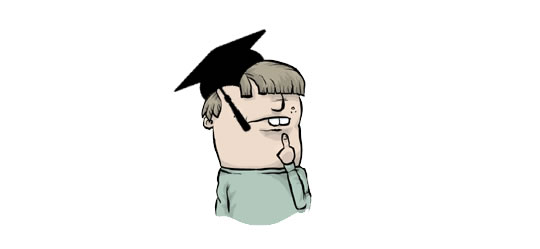
Do any of these myths about the brain catch you out?
Surveys of teachers have revealed that many believe seven common myths about the brain, likely because the simple explanations are often attractive, even if totally wrong.
The results come from surveys of teachers in the UK, Turkey, Holland, Greece and China, reported in the journal Nature Reviews Neuroscience (Howard-Jones, 2014).
See if any catch you out…
1. Myth: Right-brained/left-brained
Around 70% of teachers believed that a person is either ‘right-brained’ or ‘left-brained’.
This popular neuromyth has been debunked by evidence from over 1,000 fMRI brain scans, which found no evidence people have either ‘right-brained’ or ‘left-brained’ personalities.
Read on: Debunked: ‘Right-Brain’ and ‘Left-Brain’ Personalities
2. Myth: You only use 10% of your brain
About one-half of those surveyed believed that people only use 10% of their brains.
It’s a myth.
The idea that we only use 10% of our brains is probably such an enduring myth because it’s comforting to think we have spare capacity.
The ‘unused’ 90% could take up the slack after brain injury or offer the possibility for miraculous self-improvement.
This flexible factoid has been used not only to sell products to enhance our brain’s performance, but also by psychics like Yuri Geller to explain mystical cutlery bending powers.
You can check out the boring, tedious, but unavoidable facts here: 10% brain myth.
3. Myth: Sugar reduces attention
Around half of teachers thought children become less attentive after consuming sugary snacks or drinks.
This myth probably comes from weak links found in early research between sugar consumption and ADHD.
The link still remains unproven, and at best weak.
4. Myth: Learning styles
Over 90% of teachers believed that students learn better if they are taught according to their preferred learning style: auditory, kinaesthetic or visual.
In fact, there is no neuroscientific evidence for this and no evidence that learning is improved by teaching to individual learning styles.
5. Myth: The shrinking brain
One quarter of teachers believed that if people don’t drink six to eight glasses of water a day, their brains will shrink.
Not true.
6. Myth: Exercise improves communication between brain hemispheres
That a short bout of exercise somehow improves communication between the brain’s hemispheres was one of the most prevalent myths amongst teachers, which around two-thirds believed.
In fact there’s no evidence that exercise in this way can aid inter-hemispheric information transfer.
The claim is simply unfounded.
7. Myth: Critical period for learning
Around one-third of teachers believed that there are critical periods when certain types of learning must occur.
This has a grain of truth, in that children are particularly sensitive to learning at certain periods.
However, we can continue to learn, and our brains can change — so-called ‘plasticity’ — throughout our lives.
…and more neuromyths
Other myths that some teachers believed included:
- the idea that rich environments stimulate the minds of pre-school children (it’s a myth),
- regularly drinking caffeinated drinks decreases alertness (very odd myth!),
- and learning problems cannot be alleviated by education (a myth endorsed by around 1 in 7 teachers)
Dr Paul Howard-Jones, the study’s author, said:
“These ideas are often sold to teachers as based on neuroscience — but modern neuroscience cannot be used support them.
These ideas have no educational value and are often associated with poor practice in the classroom.”
Image credit: Lentini










